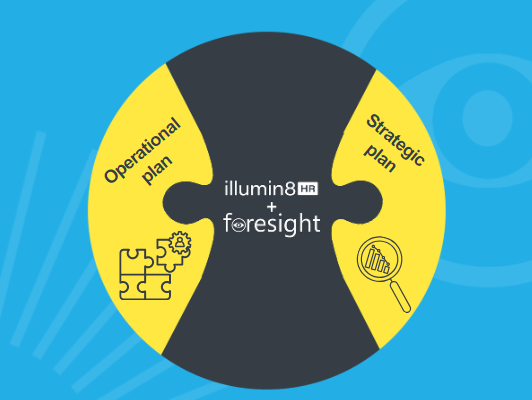Earlier this year we wrote about the CHROs priorities for 2022. Now that goals have been set and KPIs put in place, how can you ensure 2022 is the year that you reach your objectives? Sound project management, that guides you and your team step by step, is the foundation of achieving your ambitions.
More work is becoming project-based, and this is certainly true within the HR space. The difference with project-based rather than role-based work, according to Forbes, is that project-based work has
“clear goals, milestones and deliverables and a defined start and end date.”
“Projects may take hours or months or longer — the duration varies with every project and business need. But the work is aligned against business needs and objectives, not specific roles.”
Given the focus of project-based work on metrics, deadlines and collaboration, it’s easy to see why businesses are investing in systems to support their project management.
Within HR, an HR analytics (also known as people analytics) platform like illumin8HR is well placed to support you in achieving your project goals. Here’s how:
1. Getting buy-in
HR priorities should align with the overall business goals. Get senior stakeholders engaged in agreeing the areas of focus and the outcomes the business wants to achieve. HR projects can have a wide-reaching impact on the organisation so getting engagement and commitment from the start is critical. If achieving the goal requires a project team from across the business, ensure there are clear expectations on what’s needed along with the likely impact and timescales. Consider a board level sponsor and agree how updates will be shared with the leadership team and wider business.
2. Building a project team
Once the project is agreed, get a team on board to support you with defining priorities, looking at data and ensuring actions are taken away and implemented across the business. The project team should include leaders, managers and team members from the relevant business areas. Getting engagement from all levels of the organisation is key, particularly where projects aim to achieve strategic goals, such as cultural change. Using an analytics platform as a basis for the project allows you to share chosen information and data with team members, tailoring it according to their role in the project.
4. Understanding the problem you are trying to solve
Based on your overall goal, use analytics to understand your starting position, problem areas and root causes. Break your project down into strands of activity with dates and deliverables attached to them. For example, if one of your goals is to reduce absence then allocate workstreams such as a review of sickness patterns and types of sickness, a review of absence rates by manager, location or job role to help identify possible drivers, and a review of the training and development needs of those with high absence rates. Results of this analysis can be displayed in one dashboard making it easier for project team members to access it.
4. Setting metrics
It’s important to track how you are progressing towards your goals over time. A traffic light system (red, amber and green) is a simple and visual way to spot areas on track and those falling behind. By allocating deadline dates to each action within the project, you can keep your finger on the pulse of how the project is progressing and where further work is needed.
5. Prioritising actions
Returning to our example of reducing absence, it’s important to route actions to team members in order to progress towards your goals. If you have identified that in teams with high absence rates that managers are underperforming, that pay reviews have not been timely, and that development plans are not in place, set actions for these workstreams. Using an analytics platform, issues that are raised can be converted into actions which can then be prioritised by the project manager, meaning all the work that is being done is aligned to the overall project goals.
6. Sharing regular updates
Sharing progress reports is a great way to maintain momentum and continue to build support for your project. Using an HR analytics platform as a basis for your project allows all team members and leadership to access live, simple, dashboards that show them only what they need to know, and in a visual format. As the project manager you can set up automated report schedules to keep the project team up to date. Custom dashboards, with permissions set by the project owner, ensure that team members can see the information they need without compromising on confidentiality.
7. Scenario modelling
Add an extra dimension to your project by offering your stakeholders a future-focused view. For example, if all employees have timely reviews, a targeted training plan and high performing managers, what would the impact on retention and overall company performance be? The ability to model scenarios, or create forecasts based on current performance is a powerful aspect of analytics that illustrates the art of the possible to colleagues and leadership.
The importance of software as more work becomes project-based
Good HR project management is much more than the tools used to support it. It requires the right mix of people to support it, stakeholder buy in and time and resources to manage. But a strong supporting system is the foundation of project success.
In fact, research from the Project Management Institute found that adhering to project management methods and strategies reduced risks, cut costs and improved success rates of projects.
To discover more about illumin8HR and how it can support your HR projects, contact us:





